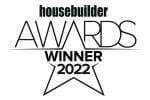If you have had an external tap fitted to your home it is important that as winter approaches, you turn off the shut off valve on the pipe and the tap/pipe is drained. The valve is located where the external tap is connected to your water supply; this is usually beneath your kitchen sink, but not always.
Access chambers give access to the drains, usually where branch drains join together. Ask your Site Manager if you cannot locate them. Do not obstruct or cover them with soil, you may need to get access to them quickly if there is a blockage.
Be aware of the damp-proof course and air bricks. If soil or other garden material is piled up against the outside walls it may cover the damp-proof course and cause rising damp. If it covers the air brick, this can lead to dry rot if you have a suspended timber floor because it blocks under-floor ventilation. If you are not sure where the damp-proof course is, your Site Manager will show you. Keep soil and paving about 150mm (6 inches) below it.
There may be an approved landscaping scheme for the development which may require the builders to plant trees or shrubs in your garden during the appropriate season.
Planting trees and shrubs can make your garden more attractive, but be careful; trees and hedges take moisture out of the soil. If you have a clay soil, new planting may cause the earth to shrink, while removing existing trees and hedges may make it swell. Excessive shrinkage or swelling could damage foundations. Much depends on the type, size, and location of trees and the type of clay. You should obtain advice from an expert before planting new trees, or if a large tree dies or if one has to be severely pruned.
It is best, on clay soils, to avoid planting trees nearer to the house than a distance equal to 3 quarters of the mature height, or one and a quarter times mature height for elm, poplar, oak, eucalyptus, willow and some common cypress species.
On all soils, allow enough room for trunks and large roots to grow safely and be particularly careful if you are planting near lightweight structures or near drains. Be careful not to plant trees near your neighbour’s house. They could cause damage and you could be liable for the cost of repair.
Recently planted trees and shrubs may need to be watered copiously during their early life if they are to get away to a good start. Before cutting down or pruning a mature tree, check with your local authority to make sure that it is not protected by planning conditions, conservation area restrictions or a Tree Preservation Order.
Everyone wants a lawn to be proud of, but like many things, the more you put into it, the better the result. These notes are a guide to the essential tasks you will need to carry out to maintain your lawn. We strongly recommend that you refrain from walking or letting children and pets on to the lawn for at least 28 days after the lawn has been laid. This will allow the lawn to settle down evenly.
If your turf has been laid before you move in and it doesn’t rain within 24 hours of moving in, you must water the turf. It is important not to let the turf get dry and shrink as this will cause gaps and the edges of the grass will die. If the turf should open up, apply fine soil or compost and fill in the gaps. For watering, a hosepipe with suitable sprayer is the best method.
Mowing can commence as soon as the turf starts growing, just topping at first as the lawn gets established, then reducing the cut. Regular mowing discourages coarse grasses and weeds and makes fine grasses produce fresh shoots.
Do not allow the grass to get too long and then cut it short. This will cause destruction of the fine grasses and will weaken other grasses. It is advisable to mow with a grass box and change the direction of mowing from time to time.
A lawn needs nitrogen (this greens the grass and stimulates leaf growth), phosphates (to build up the root system) and potash (this stimulates healthy growth). These can be obtained by buying a propriety brand of lawn fertiliser. All fertilisers should be well watered if no rain occurs within 48 hours.
Newly laid lawns should not be fertilised within the first year.
Upon legal completion, all planting will be living. The garden area will be in accordance with the levels defined on the external works plans.
St. Modwen Homes will replace any failed landscaping reported at the time of demonstration. St. Modwen Homes cannot be held responsible for landscaping that fails as a result of lack of watering or care.
Fencing, gates and decking will be to a good standard. Timber may swell or bow as it absorbs moisture. Some splitting may occur; knotting to timber is normal.
St. Modwen Homes will repair structural damage to fencing, gates or decking where poor workmanship is shown to be the cause.
Storm damage is not covered under the warranty and should be referred to your household insurers. Maintenance and care is the responsibility of the home owner.
St. Modwen Homes will repair any damaged sill if reported at the time of demonstration. Minor cracking may occur which is as a result of normal shrinkage. Maintenance and touch-ups are the home owner’s responsibility.
Drainage systems will operate correctly as designed and will be free from blockages. Covers will be securely fixed and level with the adjacent surface. St. Modwen Homes will carry out repairs where poor workmanship or failure of materials is shown to be the cause.
St. Modwen Homes will not be responsible for drain blockages caused by inappropriate disposal of household waste.
Home owners should not use drains for disposal of inappropriate waste, e.g. nappies, cooking oil, sanitary products etc. Some homes will have a drainage channel with a grating across it. This is known as an ACO drain and is normally found in front of the garage if the drive slopes down towards it. This should be cleaned out regularly to prevent the buildup of debris and silt which may cause flooding.
To clean the drain, release any bolts or screws that are fitted, lift the grate and use a garden trowel or similar to clear the channel. When this has been done, replace the grate and refasten the bolts or screws.
Your loft is insulated to keep your home warm. Please adhere to the following:
DO NOT obstruct the ventilation provided as this may cause condensation.
DO NOT leave the loft hatch open in cold spells. This will allow heat loss to your home and condensation will form.
DO NOT use the loft for storage – it is not designed for this purpose. If you have to gain access to the loft please ensure that you walk on the roof timbers. If your loft contains a flue/ducting DO NOT STORE ANYTHING that may dislodge the flue/pipes from their fittings.
PLEASE NOTE that lofts and garages are not considered storage areas. To find out more please refer to your NHBC/LABC booklet.
Roof tiles and flashing will be fixed in accordance with the manufacturer’s specification and will provide protection against water ingress. St. Modwen Homes will re-fix or replace tiles or flashing where failure has occurred due to poor workmanship or material failure.
Tiles on sloping roofs are brittle and easily cracked. They are not designed to take a person’s weight. Anyone working on the roof, for example to install a television aerial where permissible, or window cleaners must use suitable access equipment.
Flat roofs are also not designed to take heavy loads and can be easily damaged. Do not allow window cleaners or decorators to use the roof for access without protecting the surface.
Storm damage should be notified to your building insurers. Problems with birds or animals entering the roof space or loft are not covered unless as a result of a defect.
Garage doors will be installed as per the manufacturer’s recommendations. Overhead doors will operate correctly. Water ingress may occur during severe weather conditions. Minor cracks in concrete floors due to shrinkage should be expected.
St. Modwen Homes will adjust garage doors and locks in line with the manufacturer’s recommendations for installation during the warranty period. Minor dents or scratches will only be repaired if reported at the time of demonstration. St. Modwen Homes will repair cracking likely to affect the performance of the concrete. A repair will be by the way of surface patching. A colour match cannot be guaranteed.
Garage doors should only be opened from the centre handle. Failure to do so may invalidate your warranty.
Regularly check all wear items (including cables over their full length). If any wear is detected, contact your local door specialist and arrange for a replacement. Non-replacement of items may invalidate your guarantee.
Tighten screws, nuts and bolts as required periodically.
Annually: all springs, latches, wheel spindles and pivot points should be lubricated using light lubricating oil. Lock cylinders should only be lubricated with graphite dusts. Track runners must be kept clean and free of obstacles at all times (do not grease).
Springs should be inspected for adverse wear at least once a year and replaced if necessary.
Garages are not designed to be used for general storage. St. Modwen Homes will not be responsible for any damage caused to items stored in the garage.
A consequence of drying out may be the appearance of a white deposit on walls, brickwork or mortar joints, called ‘efflorescence’. This is caused by natural salts coming out of the wall materials and is quite normal. It is not harmful and usually disappears over time. If efflorescence occurs on external walls it can be removed by brushing with a stiff, dry brush. Do not use water as this can make the problem worse. If efflorescence persists internally, it could indicate a water leak, in which case you should contact the Customer Service Team.
Brickwork and render will be consistent in texture, finish, colour and be free from significant cracks. Cracking and crazing may occur due to shrinkage but will not be such as to affect overall performance. Shading differences can occur between batches.
St. Modwen Homes will repair brickwork or render where cracking is significant and is likely to affect performance. This does not include minor cracks or crazing. Repairs to brickwork and render will be by way of patching and re-decoration to the area repaired only. St. Modwen Homes cannot be held responsible for minor colour variations to repaired areas.
Garages do not have to be built to the same requirements as houses and after heavy rainfall, water ingress may occur.
Home owner’s responsibility/information some minor cracking may occur and normal shrinkage should be attended to during routine maintenance.
Fitted appliances will operate as specified by the manufacturer and be free from damage. In the first instance please report any fault direct to the manufacturer under the terms of the warranty registered with them within the 2 year warranty. Cosmetically damaged items will be repaired or replaced only if reported at demonstration or on the day of legal completion.
Please refer to the manufacturer’s manual for maintenance and cleaning instructions and ensure that any warranty/guarantee cards are sent off to the appropriate manufacturer.
All surfaces will be free from dents, chips and scratches on legal completion. Natural materials will have colour and tone variations. St. Modwen Homes will repair or replace damaged items if reported at handover. After legal completion the presence of dents, chips or scratches are the home owner’s responsibility. Windows and patio/french doors All glazing will be fitted with appropriate seals and operate smoothly. Locks will be fully operational and installed as per the manufacturer’s recommendations. St. Modwen Homes will adjust or correct windows and locks to meet manufacturer’s recommendations for installation.
Any damaged glass or frames must be reported at the time of demonstration or on the day of legal completion. Following this, the presence of chips or scratches are the home owner’s responsibility. Trickle vents should be kept open to reduce condensation. Clean and lightly oil moving parts.
Frame – wipe frame regularly both internally and externally using a solution of water and washing up liquid. Do not use any form of abrasive or alkaline cleaners that can damage the surface.
Glass – is not scratch resistant, so take care when cleaning and remove any jewellery. Use any household glass cleaner applied with a soft cloth to clean or polish, alternatively use soapy water applied with a sponge and removed with a soft cloth. Do not use abrasive cleaners.
Handles – gently remove dirt with a solution of warm soapy water on a sponge or soft cloth, then buff with a clean cloth.
Service connections and meters shall be accessible, free from damage and installed in accordance with industry regulations. St. Modwen Homes will repair or replace damaged meter boxes if reported at handover.
Home owner’s should familiarise themselves with connections, isolation switches, stop cocks etc. during the demonstration. The connection of the main BT line is the home owner’s responsibility.
Ironmongery will be in good decorative order on legal completion. St. Modwen Homes will repair or replace tarnished ironmongery if reported at handover. Tarnishing may occur if the appropriate cleaning and maintenance is not undertaken.
Doors should be free from damage and not stick, bind or become hinge bound. Hinges should be free from paint. Locks and deadbolts should operate smoothly and as designed.
St. Modwen Homes will repair any dents and scratches if reported at the time of demonstration/handover and will ensure the correct operation of the door and hardware at legal completion.
Locks and hinges benefit from regular maintenance. Oil locks periodically to prevent sticking. During the “drying out” period of your home doors may expand or contract reflecting the conditions within your home. Minor warping that does not affect the function of the door isn’t considered to be a defect.
Door – to prolong the furniture and the paint finish of the door, regular dusting with a soft cloth or brush, supplemented by occasional washing with warm soapy water, is recommended. The factory finish may begin to wear and the colour or stain will need to be reapplied on a regular maintenance cycle by customers.
Painted surfaces will not display drops, runs, thin areas or any major colour variations. Surfaces will be reasonably smooth and free from nail pops, cracks or splits.
If reported at the time of demonstration, St. Modwen Homes will correct and touch-up areas where the finishing standards have not been met.
After legal completion maintenance and touch-ups are the home owner’s responsibility. Minor cracks, splits, separations and warping may occur during the drying out of the home. If this occurs after legal completion it should be attended to during routine household maintenance. Please note it is recommended that the first exterior repainting or staining should be undertaken no later than 2 years after legal completion.
Exterior paintwork should be regularly repainted to preserve the wood. Provided it is properly done, repainting or staining should only be necessary every 3 or 5 years. You may need to repaint more often if you live by the sea or in an atmosphere harmful to paint.
On legal completion, woodwork will be treated and where applicable have a consistent decorative finish, be free from major cracks, splits and separations.
Should your smoke detector start beeping for no reason, check the power supply. It may need the internal battery replacing, even if it is mains powered.
If a light fixture does not work check that the on/off switch is in the on position, check all bulbs are working properly and replace any damaged bulbs. Check the wall switches and, if the light is still not working, check the circuit breaker.
Check whether it has an on/off switch on the actual fitting. If not, then inspect all circuit breakers including the main breakers. If a breaker appears damaged, leave it off and call for service. If not, follow the circuit breaker procedure. If the consumer unit continues to fail please switch off all appliances and try them one by one to find the fault.
Check with your neighbours and look at street lighting to see if it is a power cut to the whole area. If not, check your home to see where the problem lies – have the fuses blown?
Check the consumer unit to see if the circuit breakers are on – in the ‘up’ position. Circuit breakers act as a ‘safety device’ and trip off if the circuit is overloaded. If the circuit breaker trips it signals a problem that needs solving – for example, faulty plugs, leads or sockets. If the circuit breaker has tripped ‘down’, check for damage.
- If it is not damaged, reset it.
- If the circuit breaks again then unplug or turn off all appliances and reset the circuit breaker.
- If it trips again, you probably have a short circuit and will require help.
- Check all light fittings as a blown bulb could be the reason for the tripping.
- If it did not trip, test all your appliances until you find the one that is faulty.
All electrical circuits, components and appliances will operate as required. A loss of power or electrical defects posing a safety hazard will be dealt with within 24 hours. St. Modwen Homes will repair or replace defective non consumable electrical components. Component parts such as light fittings supplied and installed by St. Modwen Homes are covered for 1 year only.
Before carrying out any electrical works
- Always seek professional advice and get an electrician to carry out any works.
- Switch off the mains before working on electrical circuits.
Central heating and hot water systems will operate within the manufacturer’s guidelines and will be capable of meeting the design standards. Central heating boilers should be checked and serviced at least once a year by a competent maintenance engineer so that they remain safe.
These systems should be serviced at least once a year by a competent installer in accordance with the manufacturer’s recommendations. The manufacturer should be able to provide details of a competent installer. Never attempt to service or alter an unvented system yourself. An explosion could result.
We would like to take this opportunity to remind you of the importance of having all of your gas appliances checked and your boiler serviced annually to help keep them working safely and efficiently. Failure to do so could potentially cause carbon monoxide to leak into your home, leading to serious personal injury and can even be fatal. Regular servicing is also a requirement of your warranty.
In certain regions of the country, temporary or permanent hardness in the water may be evident. Permanent hardness is mainly due to calcium sulphate and it is advised that immediately after showering, the enclosure screen together with wall tiles should be cleaned with a propriety brand of glass/shower cleaner. Cleaning is recommended on a daily/weekly basis to prevent buildup of limescale and watermarks on the glass and around the transparent seals in the enclosure.
Cleaning
To clean, just wipe with a soft soapy sponge, rinse and wipe dry. Do not use abrasive cleaners, scouring pads, powders or wire wool and don’t let the tap come into contact with paint stripper or chemical de-scaling agents. In ‘hard’ water areas, limescale may build up around the spout of your tap.
We recommend that you tackle this by cleaning with vinegar or lemon juice. Do not attempt to remove this with a knife or sharp instrument as this may lead to scratching on the surface and could be dangerous.
As a general guide, settings for radiators are either numbered, or colour coded. For the visually impaired, a clicking mechanism has been incorporated. By counting the number of clicks between each of the settings, the desired position is easily identified. To change the radiator setting for the manual valves, simply rotate the head anticlockwise to turn the radiator on, or rotate the head clockwise to turn the radiator off.
IF A RADIATOR IS REMOVED FOR DECORATION OR MAINTENANCE PURPOSES PLEASE ENSURE YOU ISOLATE THE VALVE IN LINE WITH THE MANUFACTURER’S RECOMMENDATIONS.
To ensure your house is kept safe from frozen/burst pipes, keep your heating on a constant setting during extreme weather conditions. For radiators fitted with a manual radiator valve, to protect your pipework please ensure the valves are kept open to keep the system running smoothly whilst your heating system is on. If you have had an external tap fitted to your home it is important that as winter approaches, you turn off the shut off valve on the pipe and the tap/pipe is drained. The valve is located where the external tap is connected to your water supply; this is usually beneath your kitchen sink.
There may be open spaces, wet land and play areas provided on your development. In some cases these may not be adopted by the local authority. If you are unsure, please contact your Sales Consultant or Regional Office for clarification.










